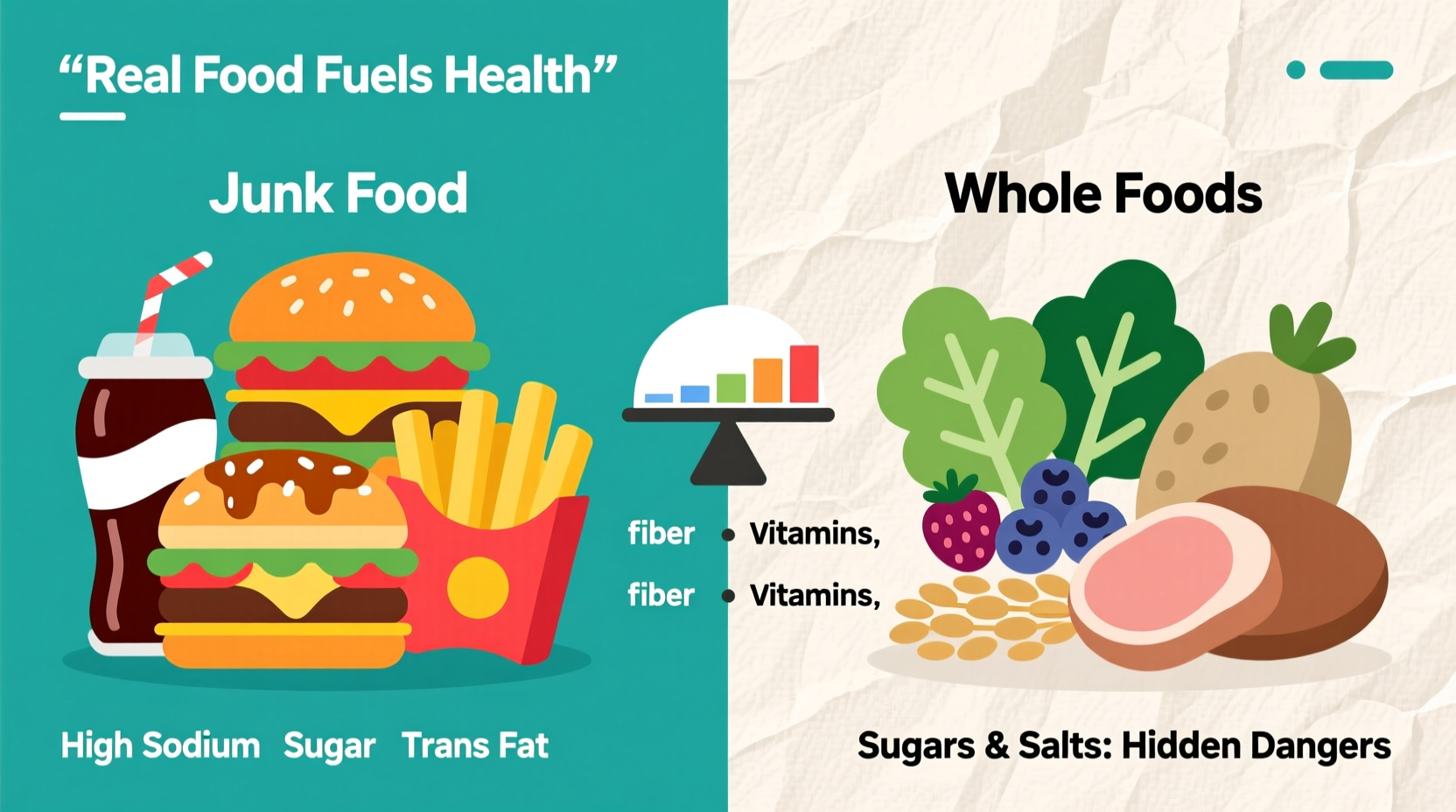Understanding what qualifies as junk food empowers you to make informed dietary choices that support long-term health. This comprehensive guide cuts through marketing claims to reveal the nutritional reality behind everyday food products.
Defining Junk Food: Beyond the Marketing Hype
While "junk food" isn't a formal nutritional category, health professionals consistently identify these products by their nutritional profile. The Centers for Disease Control and Prevention characterizes junk food as items providing "empty calories"—energy without essential nutrients.
Nutrition scientists evaluate foods using four critical criteria:
| Nutritional Factor | Healthy Threshold | Typical Junk Food Level |
|---|---|---|
| Added Sugars | <10% daily calories (FDA) | 25-50% daily calories |
| Unhealthy Fats | <10% daily calories (WHO) | 15-30% daily calories |
| Sodium Content | <2,300mg daily (FDA) | 500-1,500mg per serving |
| Fiber Content | 25-38g daily (Academy of Nutrition) | <1g per serving |
This nutritional imbalance defines junk food regardless of packaging claims. Many products marketed as "healthy snacks" still qualify as junk food when analyzed against these benchmarks.
The Evolution of Processed Eating: A Historical Timeline
Understanding junk food requires examining its historical development. The modern concept emerged through distinct phases:
- 1920s-1940s: Industrial food processing begins with canned goods and early snack foods like potato chips
- 1950s-1970s: Post-war convenience culture drives frozen dinners and fast food expansion
- 1980s-1990s: "Low-fat" trend leads to increased sugar content in processed foods
- 2000s-Present: Ultra-processed foods dominate 60% of American calorie intake (NHANES data)
This progression reflects changing food science priorities—from preservation to engineered palatability. The World Health Organization notes that modern food processing techniques have shifted focus from safety to maximizing consumption through optimized taste profiles.

Recognizing Junk Food in Your Daily Diet
Spotting junk food requires looking beyond marketing claims. These common categories consistently meet the nutritional definition:
Fast Food Staples
Burgers with multiple patties, fried chicken sandwiches, and value meal combinations typically deliver 1,000+ calories with minimal nutrients. A standard fast food cheeseburger contains approximately 300 calories but provides less than 10% of daily recommended vitamins and minerals.
Sugary Beverages
Soda, energy drinks, and sweetened coffee beverages contribute significantly to empty calorie consumption. The FDA reports that a single 20-ounce soda contains 15-18 teaspoons of added sugar—exceeding daily recommendations.
Processed Snack Foods
Chips, cookies, and candy bars combine sugar, fat, and salt in scientifically optimized ratios. These products frequently contain artificial flavors and preservatives that extend shelf life but offer no nutritional benefit.
Why Your Brain Craves Junk Food
Food manufacturers engineer products to trigger maximum pleasure response. The combination of sugar, fat, and salt activates dopamine pathways more powerfully than whole foods. This neurological response explains why occasional consumption can easily become habitual.
Research published in Nature Neuroscience demonstrates that ultra-processed foods share neurological activation patterns with addictive substances. However, context matters—enjoying pizza at a family gathering differs significantly from daily consumption of packaged snacks.
Practical Identification Strategies
Use these evidence-based methods to identify junk food:
- Read ingredient lists: More than 5 ingredients often indicates significant processing
- Check added sugars: Look for multiple sugar variants (syrups, cane juice, etc.) in first 3 ingredients
- Evaluate fiber content: Less than 1g per 50 calories suggests minimal whole food ingredients
- Notice texture: Uniform consistency often indicates emulsifiers and stabilizers
The USDA Dietary Guidelines recommend that added sugars constitute less than 10% of daily calories. Most junk food exceeds this in a single serving.
Contextual Boundaries: When Occasional Consumption Makes Sense
Nutrition science recognizes that occasional junk food consumption fits within balanced diets for most people. The critical distinction lies in frequency and portion size. Registered dietitians generally advise:
- Limit junk food to less than 10% of weekly calorie intake
- Choose single-serve portions rather than family-size packages
- Avoid making junk food your primary snack option
- Balance with nutrient-dense meals throughout the day
These boundaries help maintain nutritional balance while acknowledging realistic eating patterns. The key is developing awareness of what constitutes junk food to make intentional choices rather than habitual consumption.
Building Healthier Habits Through Knowledge
Understanding what defines junk food nutritionally empowers you to make informed choices without restrictive dieting. Focus on adding whole foods rather than eliminating favorites. Small shifts—like choosing water over soda or adding vegetables to meals—create sustainable improvements.











 浙公网安备
33010002000092号
浙公网安备
33010002000092号 浙B2-20120091-4
浙B2-20120091-4